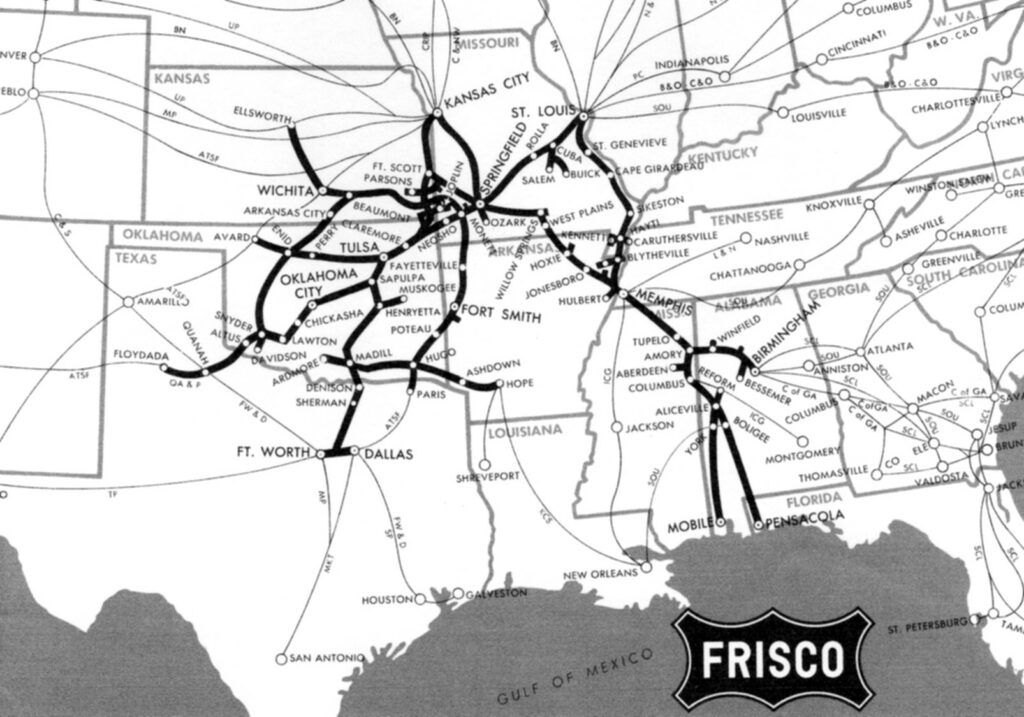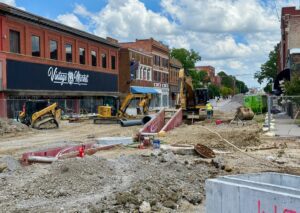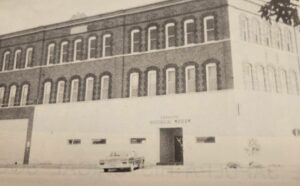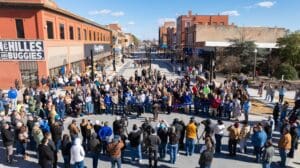Rachel Whitney,
Curator, Sapulpa Historical Museum
The Atlantic and Pacific Railroad Company arrived in the Indian Territory and Oklahoma Territory by the 1870s. Track flooded to Tulsa beginning in 1882, and then to Red Fork by 1884. It came to Sapulpa from Red Fork in 1886. When it did arrive in town, it was a dead end because tracks from Oklahoma City to this area had not been connected yet. The track ended on North Main Street.
When the railroad line was available for the Sapulpa township, the first passenger train came to pick up the Sapulpas. Sapulpa and his son, William Sapulpa, were invited by the railroad to take the first train into Sapulpa. Sapulpa was also given two brass spittoons from the train.
The train arrived in the Sapulpa township for the cattle industry and for its harvesting of Walnut trees. Cattle was a huge business in the area, at the time. Cattlemen could lease land from the Creek Nation for the great expanses of open prairie with native grass. In addition, Walnut trees were plentiful along Rock Creek and Polecat Creek.
St. Louis and San Francisco Railway Company, also known as Frisco, became the successor to the Atlantic and Pacific Railroad Company. The transition began in the 1880s but began its transition in Indian Territory by 1897. When Frisco became the main railway system in the area, the line from Tulsa to Oklahoma City, Sapulpa was named as headquarters for the construction.
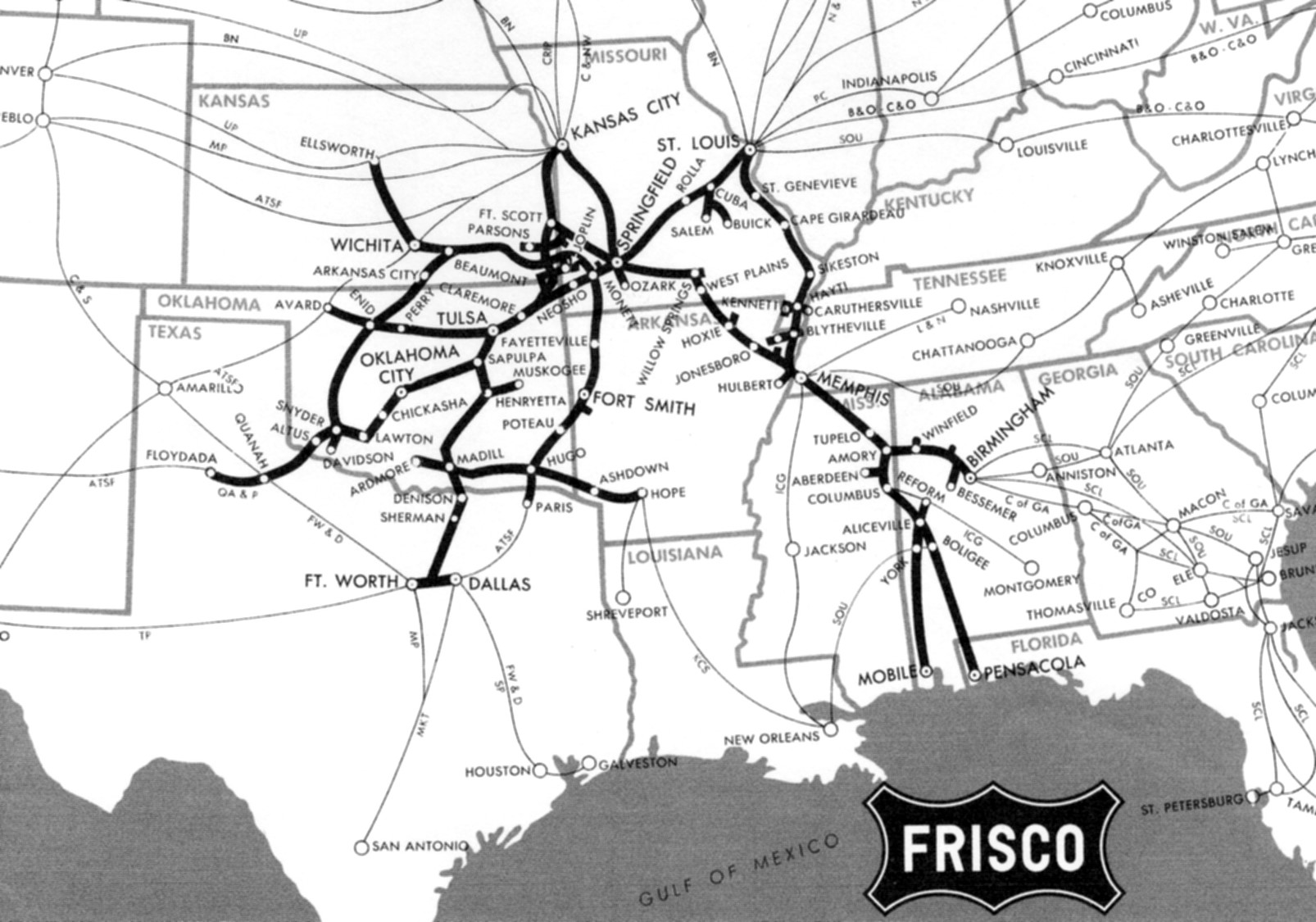
This new development created a small boom for the town. In 1901, Frisco extended its line South to Texas. With lines radiating North, South, and West, Sapulpa became the Division Headquarters. A structure was built to aid the large and various extensions pulling into Sapulpa; a roundhouse was built to store, clean, repair, cool down, and transition engines.
Even with the growth, rumors and worries began for the citizens of Sapulpa that the movement would be taken to Tulsa. Tulsa Frisco headquarters had shops and extensions from other railway systems connecting their stations. “With the locating of more railroad shops, officers, division men, etc., at Sapulpa, it doesn’t look as though Frisco is going to move the roundhouse to Tulsa, this month anyway.”
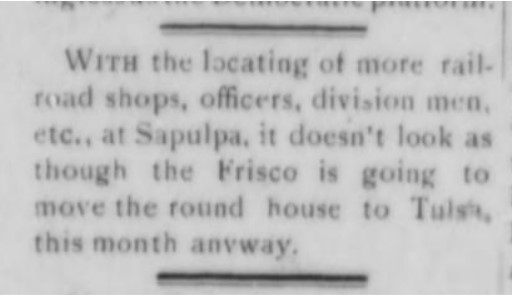
With the town’s growth, Frisco needed a permanent location for its workers. Frisco built a housing facility for its employees for overnight stays. The two-story YMCA, Young Men’s Christian Association, opened on February 14th, 1905. The building was located on the north end of Elm Street, just off East Hobson. The building had sixteen rooms with 32 beds on the top floor, and these were only used by the Frisco workers. The main bottom floor was divided into offices and reading rooms. The basement had a gymnasium, bathrooms, and a boiler room.
In 1907, Fresco built a new depot and Harvey House. The Harvey House was located at the junction of the three tracks, also known as the “Y” section. “The Sapulpa building had no rival in the area. The new Tulsa Frisco station,” in 1906, “had a Harvey Newsstand, but no meal service…” Sapulpa’s Harvey House offered food and board. “The Sapulpa depot was a busy place in the ‘teens, serving 14 trains a day, both through trains and commuter service to oilfields.”
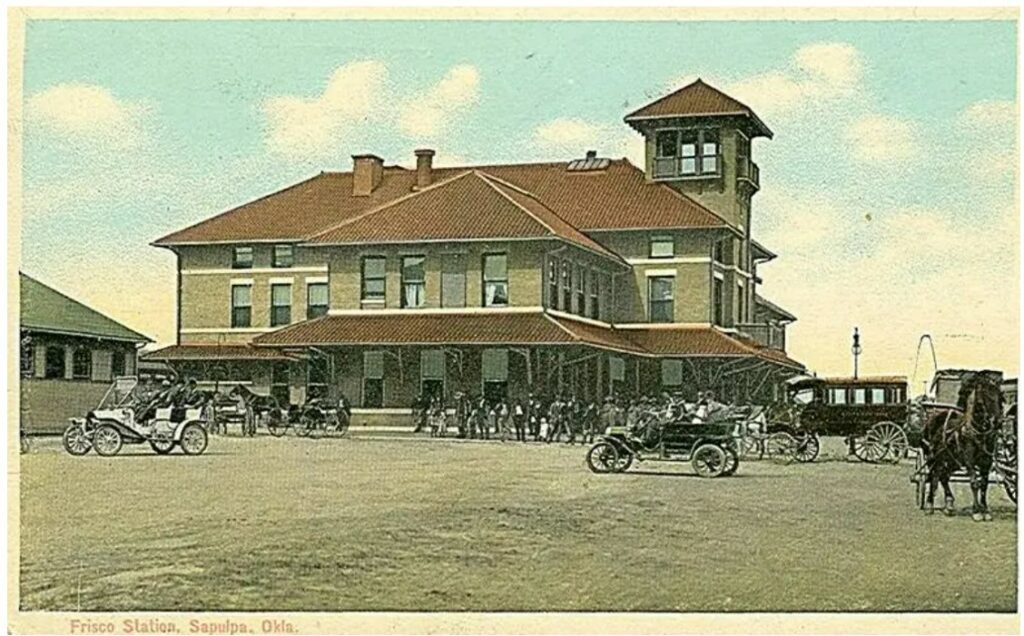
All seemed well. Over the next decades, Frisco would expand and improve their Sapulpa yard. By 1919, the roadhouse expanded and had installed 18 full stalls for the expansion. However, as mentioned earlier, the roundhouses were used for storage, repairs, and to keep engines cool and clean. To keep engines cool and clean, plenty of water needed to be used.
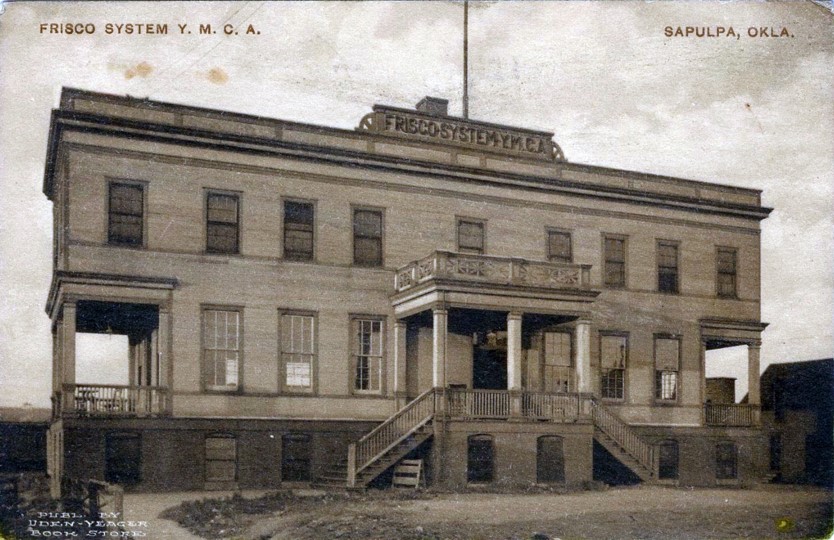
During this time, Tulsa’s water supply was obtained from the Arkansas River. Among other things in the River, the water was too salty, which caused the boilers to rust out too quickly. Tulsans, themselves, would not drink the water and used other sources. It was always said that the River was “too thick to drink and too thin to plow.”
Sapulpa, too, had the same issues with the water supply. The contamination also had to do with the oil activity near the watersheds. Frisco began searching for another resource nearby. Charles Page, from Sand Springs, came to mind. Soon, a deal was made that Sand Springs would assist Frisco in their water dilemma.
Over the next year, Sapulpa and Tulsa were able to resolve the water supply issues. However, Tulsa had obtained another resource to have one up on Sapulpa. By November 1921, Tulsa passed a near $7 million dollar bond issue to construct a new water supply from Spavinaw. It was completed by 1924.
Heavy rumors began that Frisco would officially move its headquarters to Tulsa. Frisco had outgrown its Sapulpa station. The quality and quantity of water coming to Tulsa now was a huge factor in the decision.
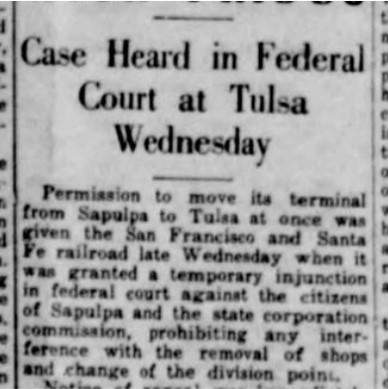
Sapulpa tried to stop the move by going to the legal system. After suing for their rights and claims for the Frisco workers and station to be kept in Sapulpa, the city would win several of these cases. Even with several wins, the one loss in court was the one that mattered.
This week in Sapulpa history, Sapulpa lost the case to keep Frisco in town. “Sapulpa’s hope for keeping the Frisco shops and terminals was knocked into a cooked hat at five o’clock yesterday afternoon.” Appeals were made, but the United States Supreme Court had the ultimate decision.

At midnight on February 9, 1927, just weeks later, Sapulpa ceased to be a Division Headquarters for the Frisco Railroad.
(County Democrat-News, January 20, 1927; Frisco Archives Online; Sapulpa Light, August 5, 1904, February 17, 1905; Sapulpa Herald, January 20, 1927; Sapulpa Times, July 19, 2021; Sapulpa Historical Society, Vol. 1)

